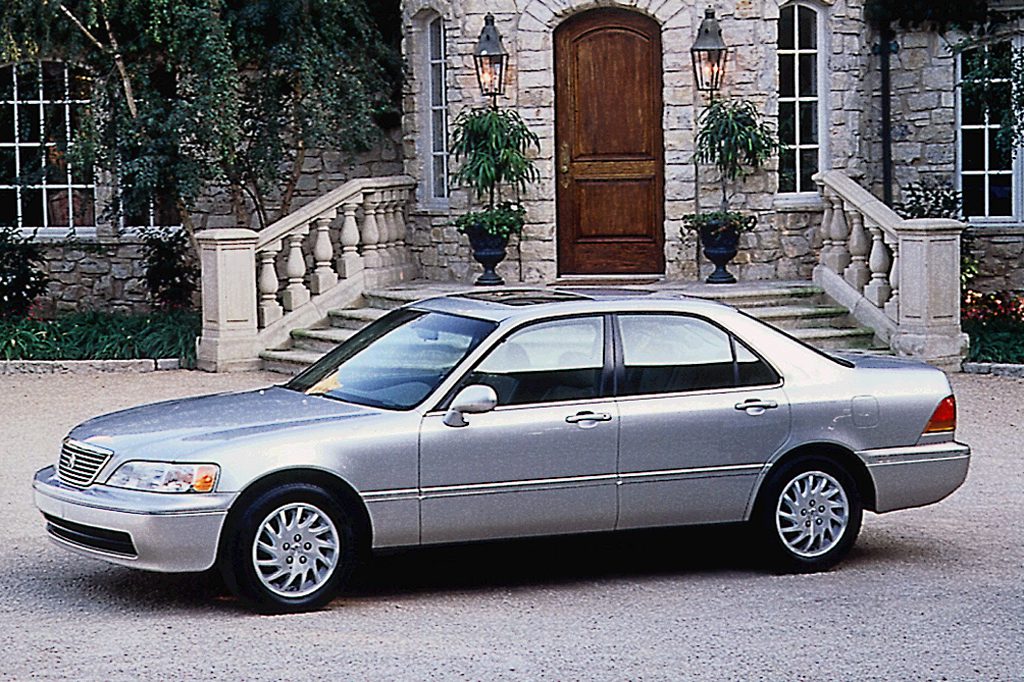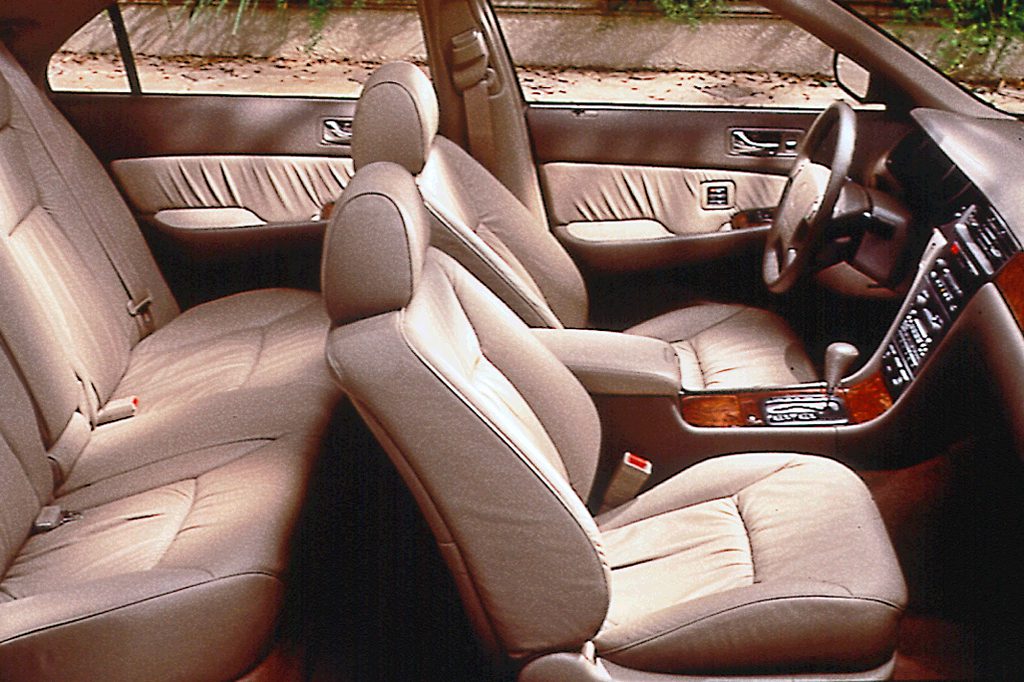| Premium large car; Built in Japan |
|
|
| Good condition price range: $2,100 – $9,500* |

1998 Acura 3.5RL

1996 Acura 3.5RL

1998 Acura 3.5RL interior

1997 Acura 3.5RL interior

1997 Acura 3.5RL
| Pros: |
|
| Cons: |
|
All told, the 3.5RL is a pleasant luxury sedan, solid and well-constructed, which does everything quite well. Few would ask for anything more on a lengthy journey. Though filled with luxury touches too, the RL does not feel particularly ostentatious.
Overview
Replacing the departed Legend sedan, Acura’s flagship model debuted after the 1996 model year began. Larger outside and roomier inside than the Legend, the 3.5RL retains front-wheel drive and a V6 engine.The 3.5RL powertrain consisted of a 210-horsepower, 3.5-liter V6 engine and a 4-speed automatic transmission. Standard equipment included dual front airbags, antilock brakes, and leather upholstery. Traction control, heated front seats and outside mirrors, a Bose audio system with CD changer, and burled walnut interior trim were included in an optional Premium Package.
Yearly Updates
| 1997 RL The 3.5RL saw no change for its second season. |
| 1998 RL Suspension revisions for 1998 promised sportier handling, without loss in ride quality. Standard alloy wheels displayed a new design, and a 3-point rear-center safety belt replaced the prior lap belt. |
| 1999 RL Acura claimed “more than 400 modifications” for 1999. None substantially changed the V6/automatic powertrain, but side airbags arrived as a new standard feature, along with brighter high-intensity-discharge headlamps; suspension retuning claimed to provide sportier handling, and larger brakes. There were also minor cosmetic alterations inside and out. |
| 2000 RL All RL models got a Vehicle Stability Assist system, which applied individual brakes to keep the car on course in changes of direction. Seven sensors in the front passenger seat measured the size and position of the occupant to determine whether to deploy the side airbag. Acura’s optional in-dash navigation system got a larger (7-inch) touch screen with matte finish designed for easier reading, plus a digital-video-disc (DVD) database. |
| 2001 RL An in-trunk emergency opener was added, along with no-cost carpeted floormats for 2001. |
| 2002 RL RL gained 15 horsepower and a standard General Motors OnStar assistance system in 2002. Other changes included wider tires, larger brakes, and more sound deadening. |
| 2003 RL Changes for 2003 include clear-lens taillamps, new-design wheels, revised color choices for paint and interior, and adoption of LATCH-system child-seat anchors. |
| 2004 RL No significant changes as Acura prepared to take the wraps off a completely new flagship in 2005. |
